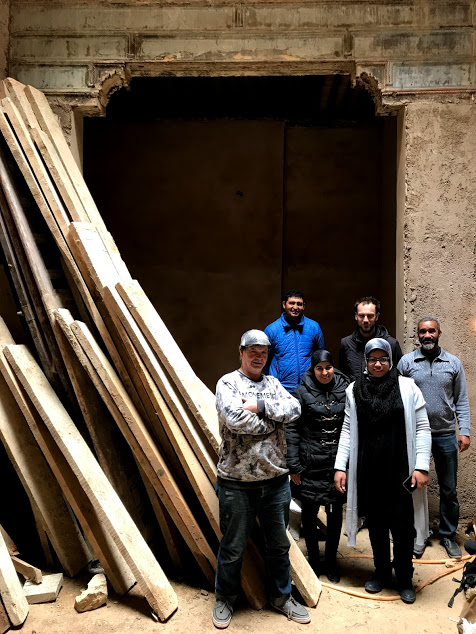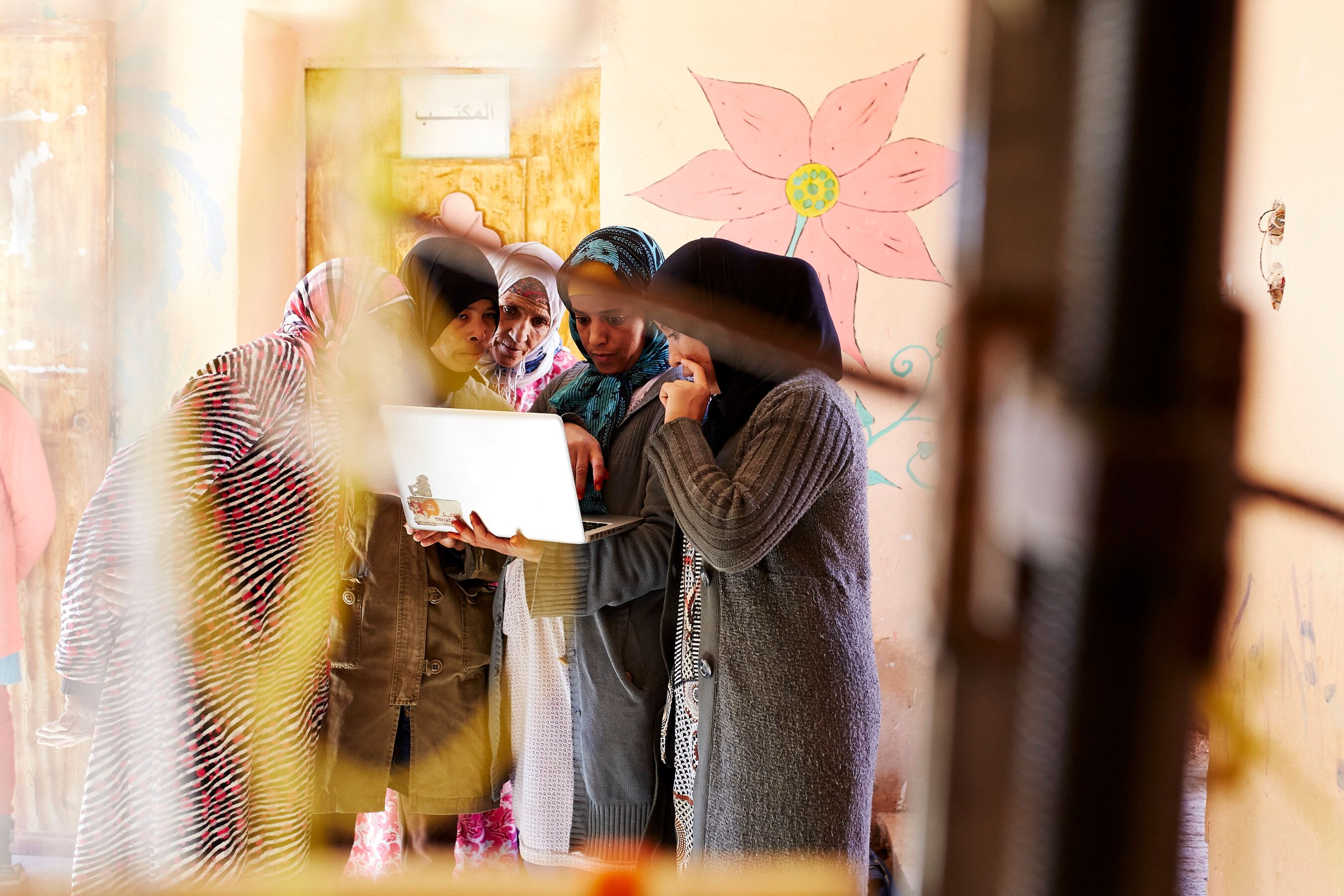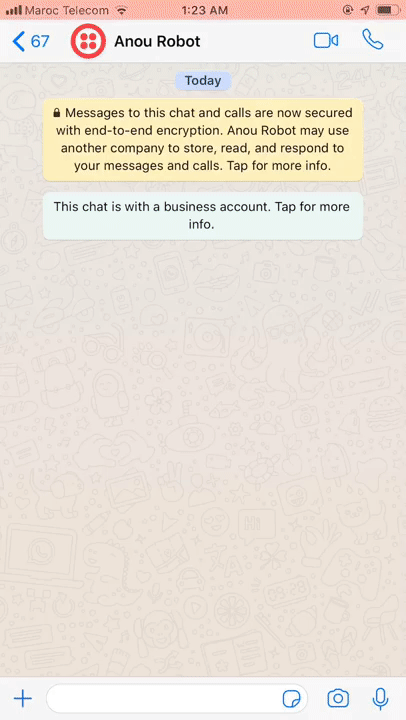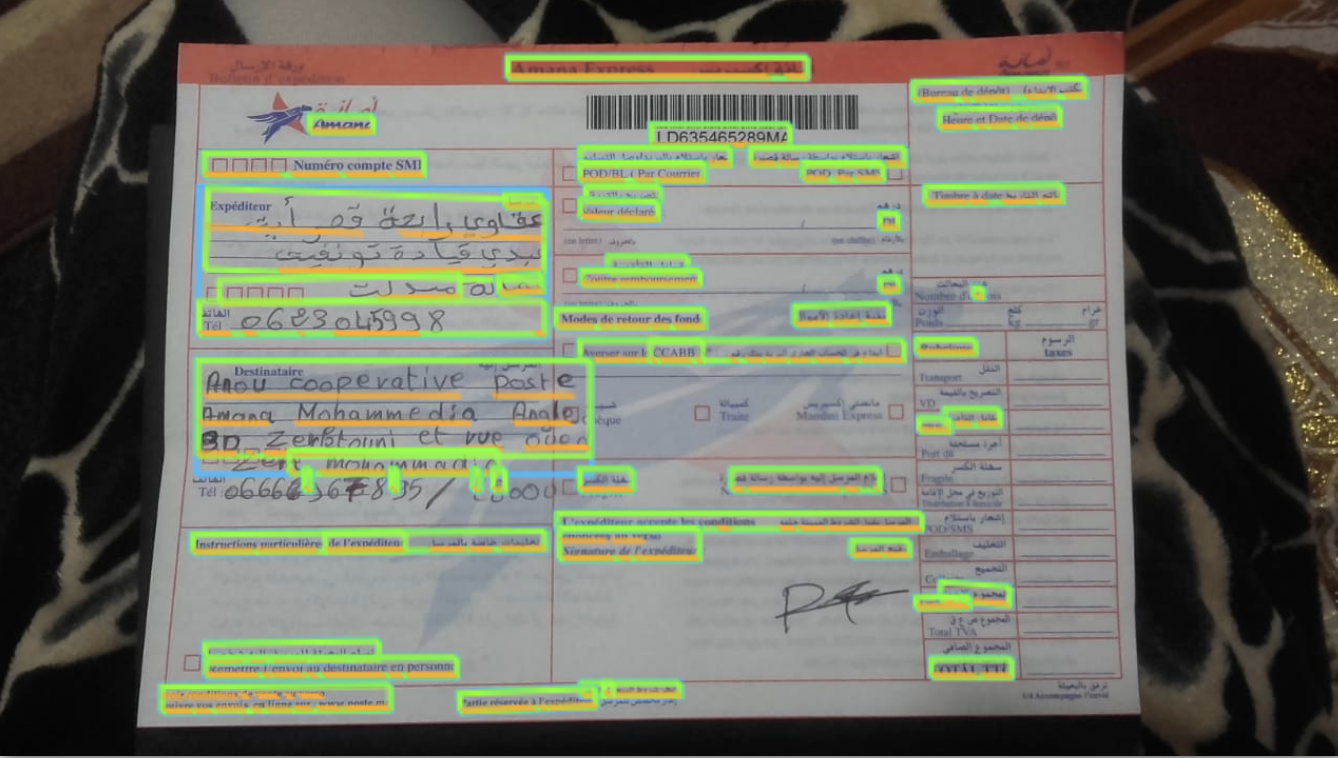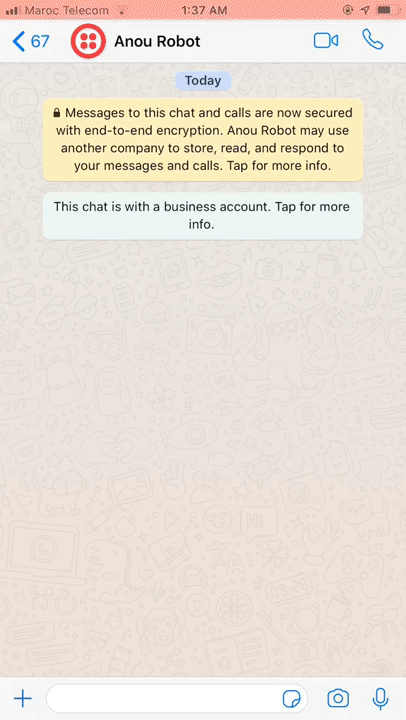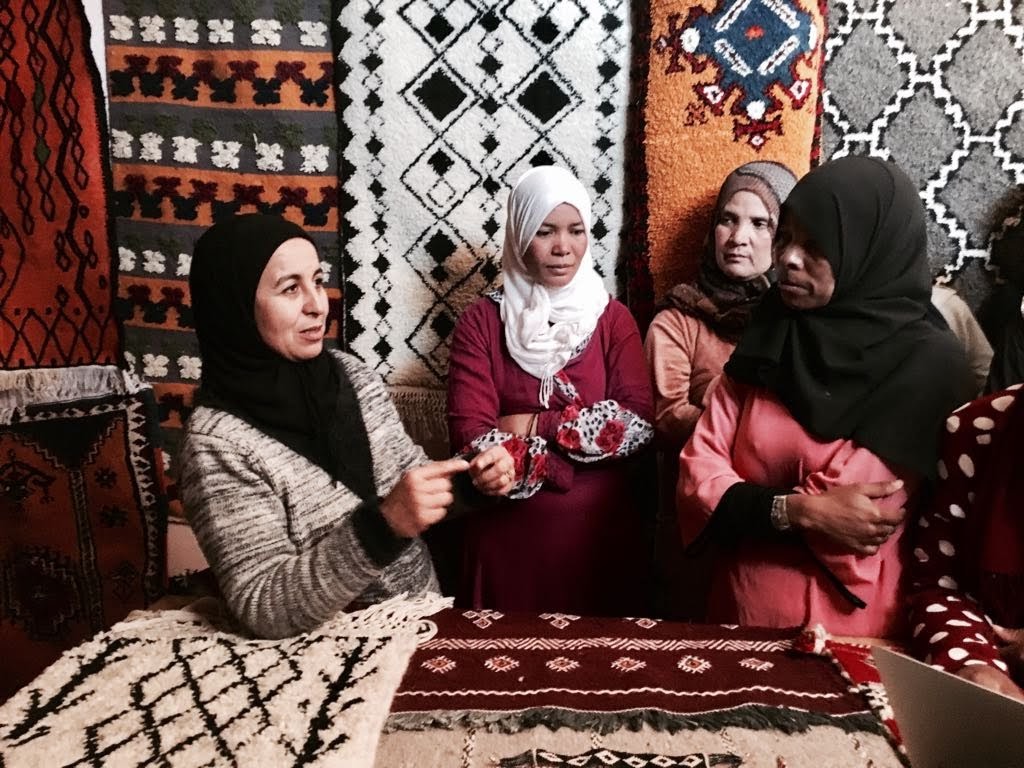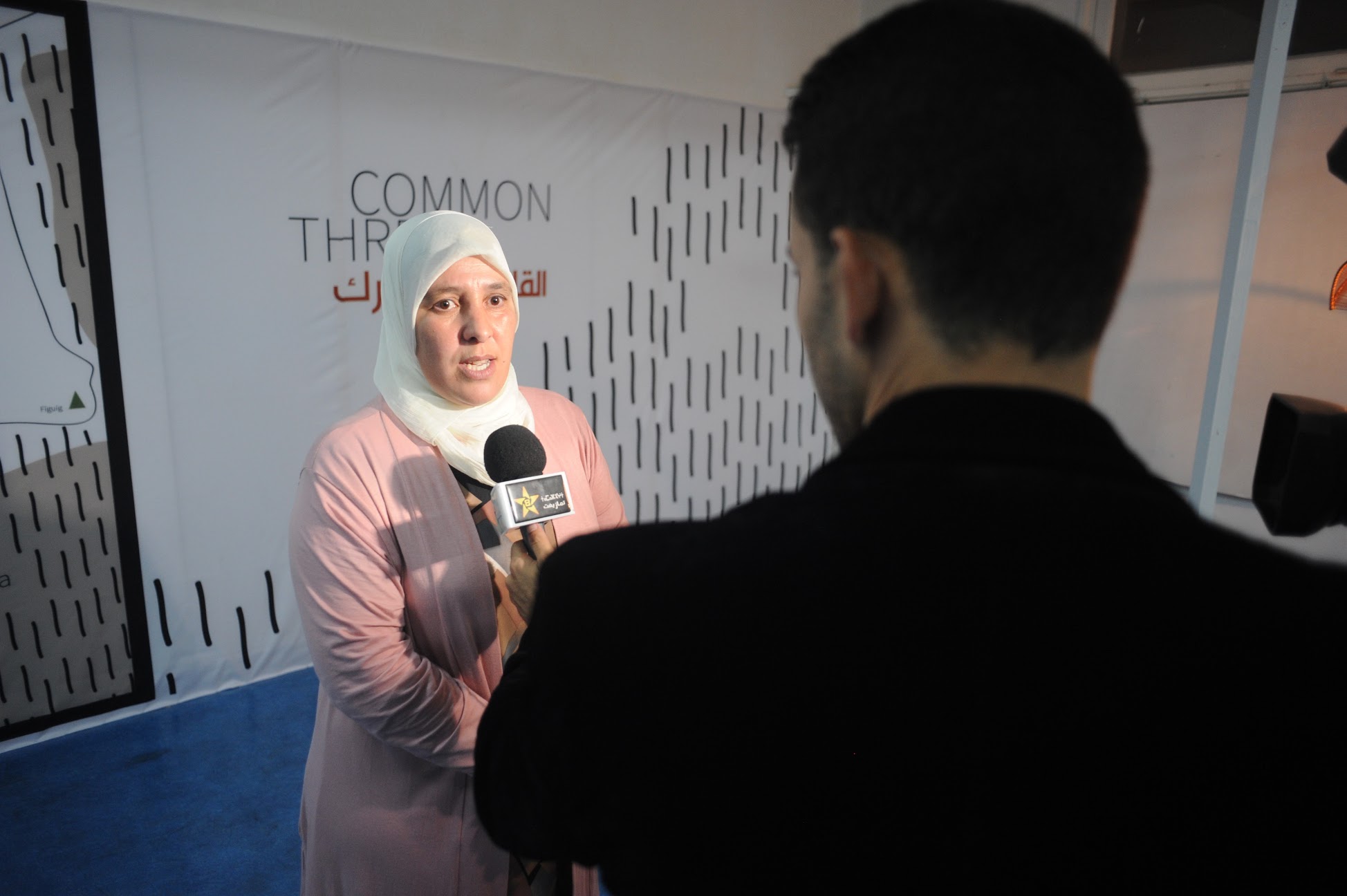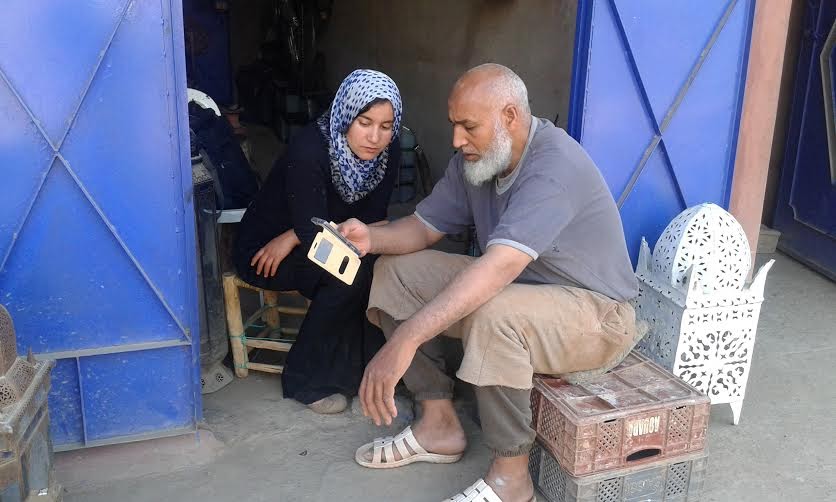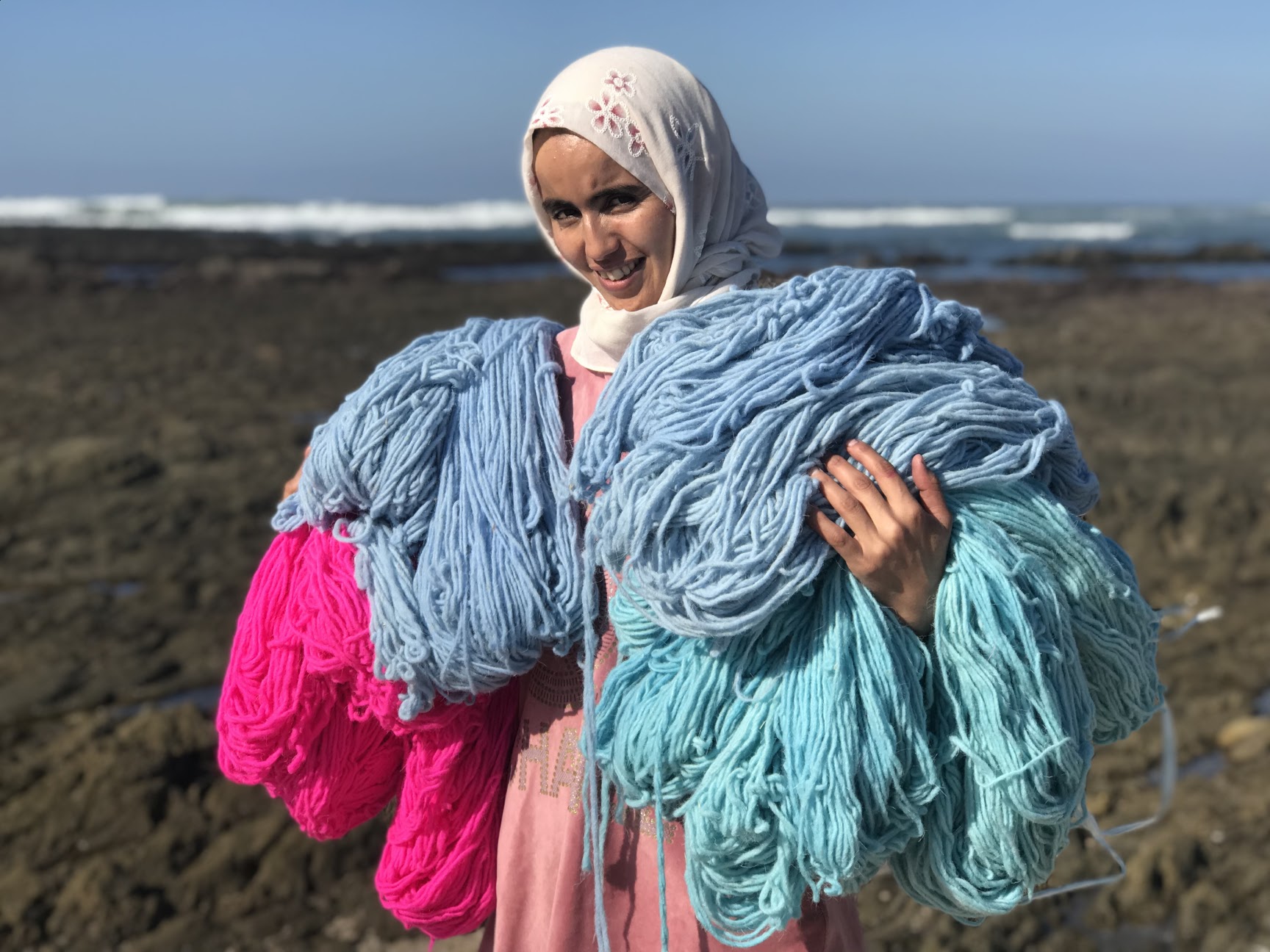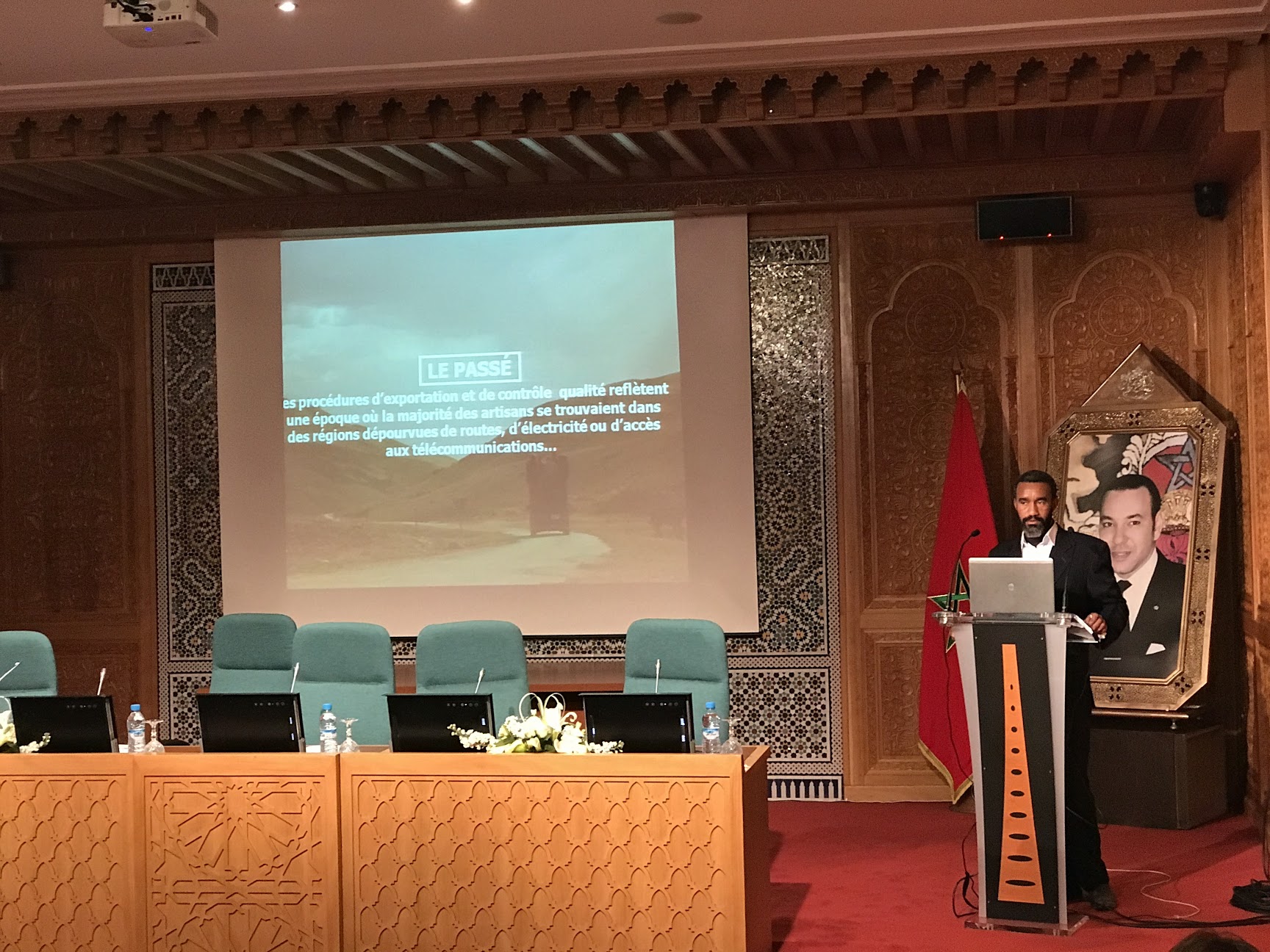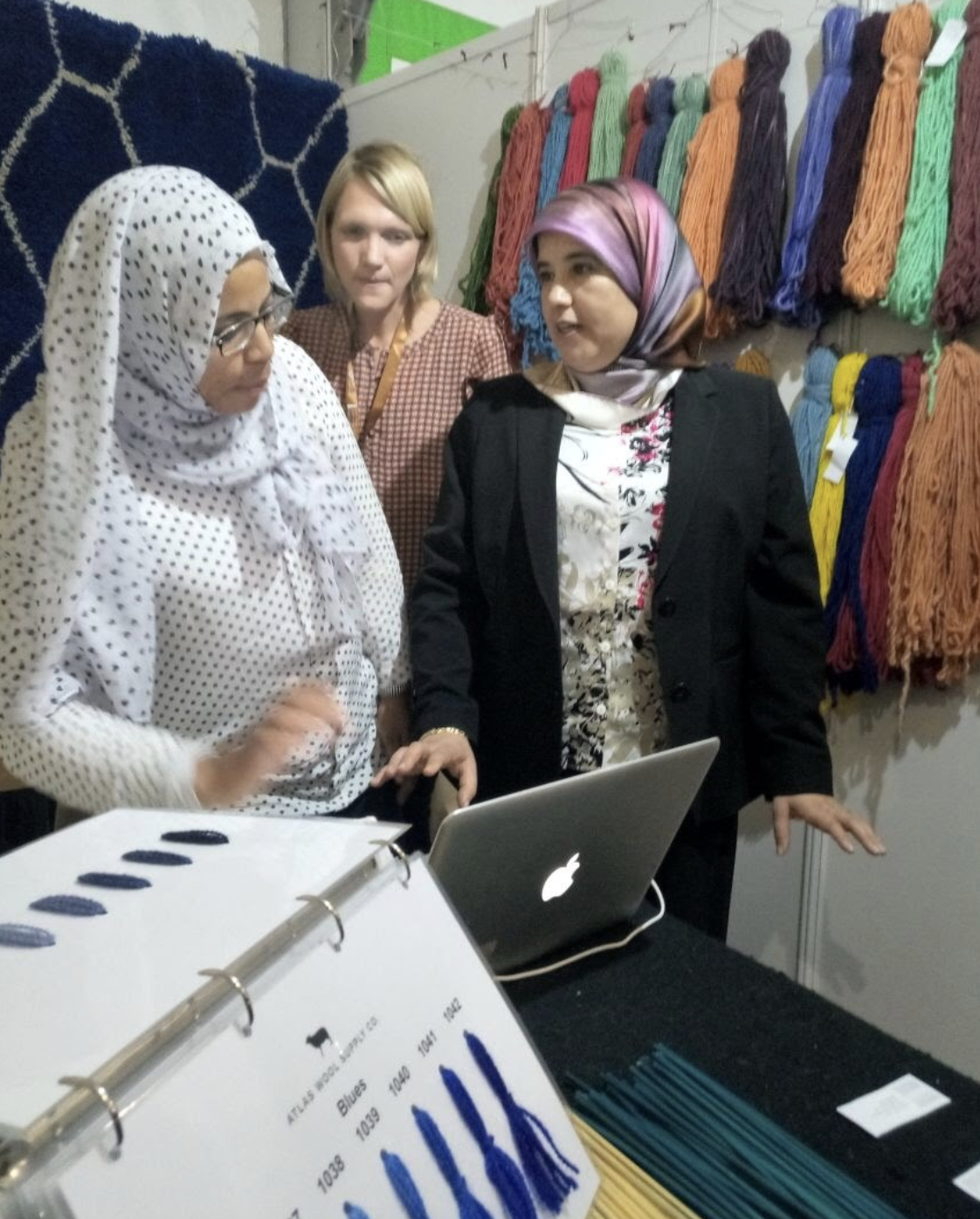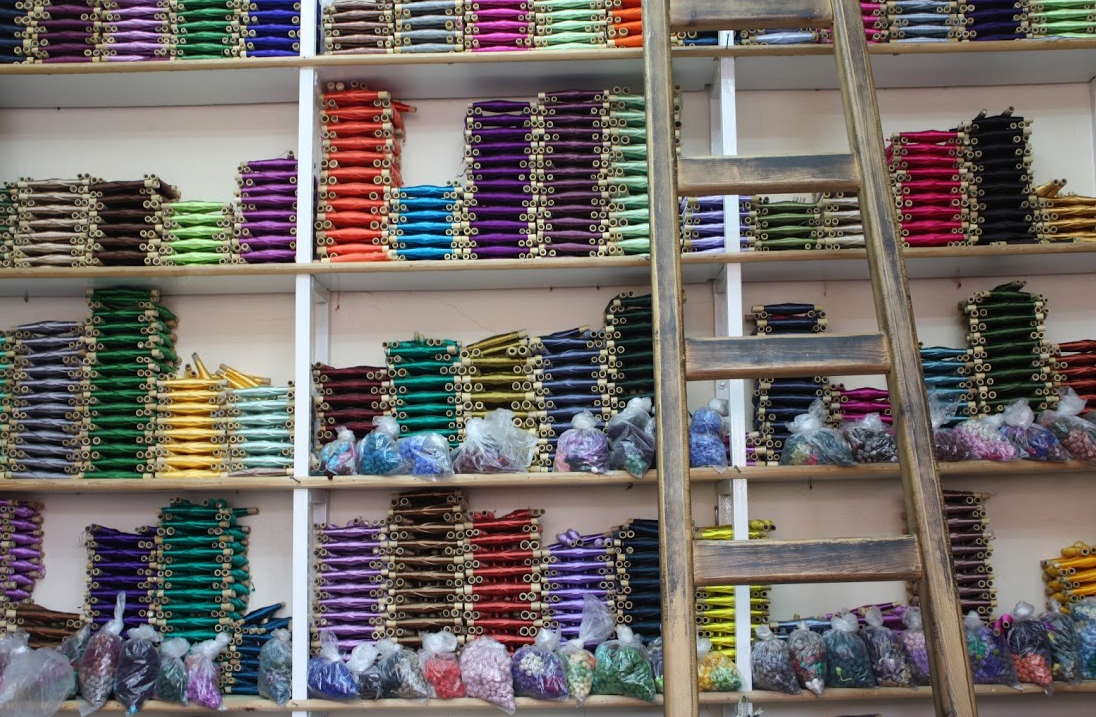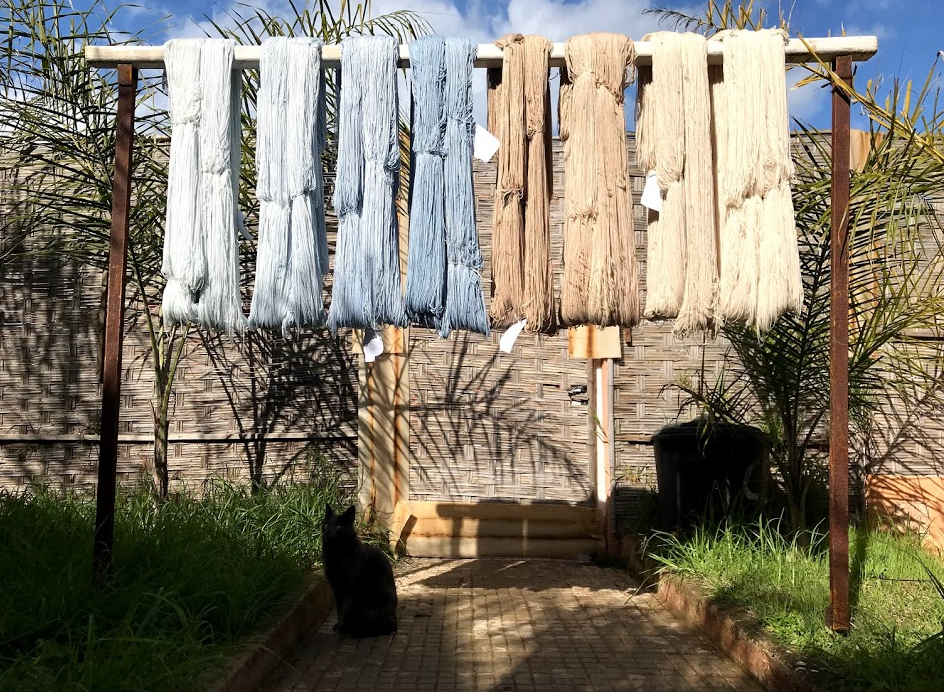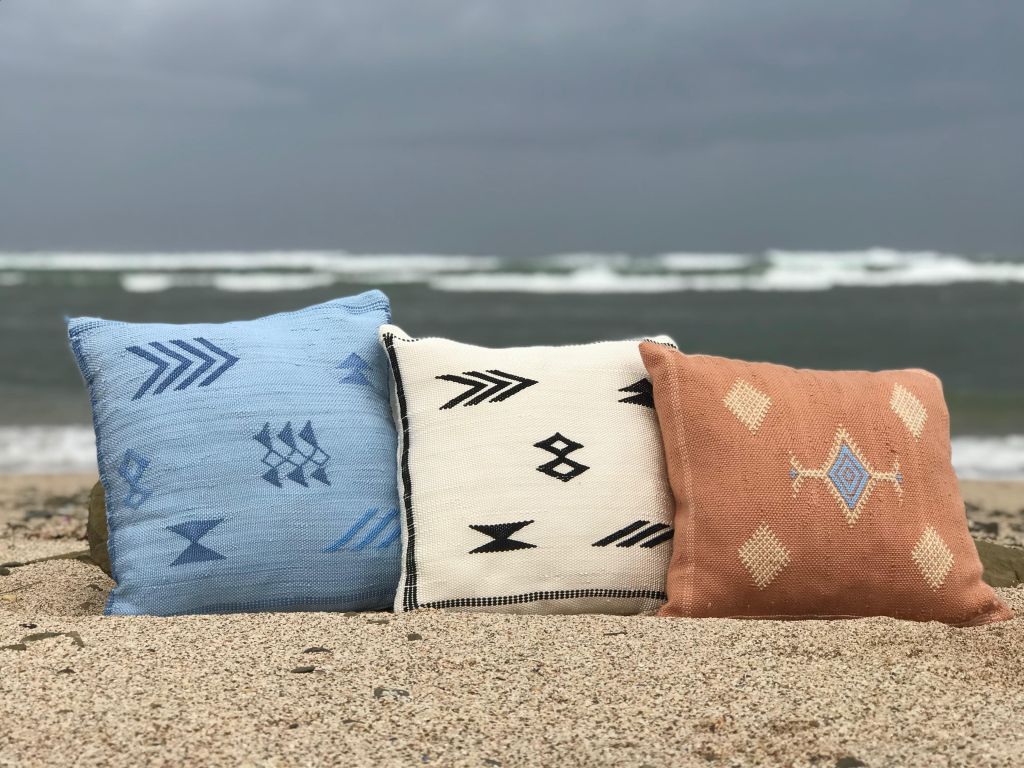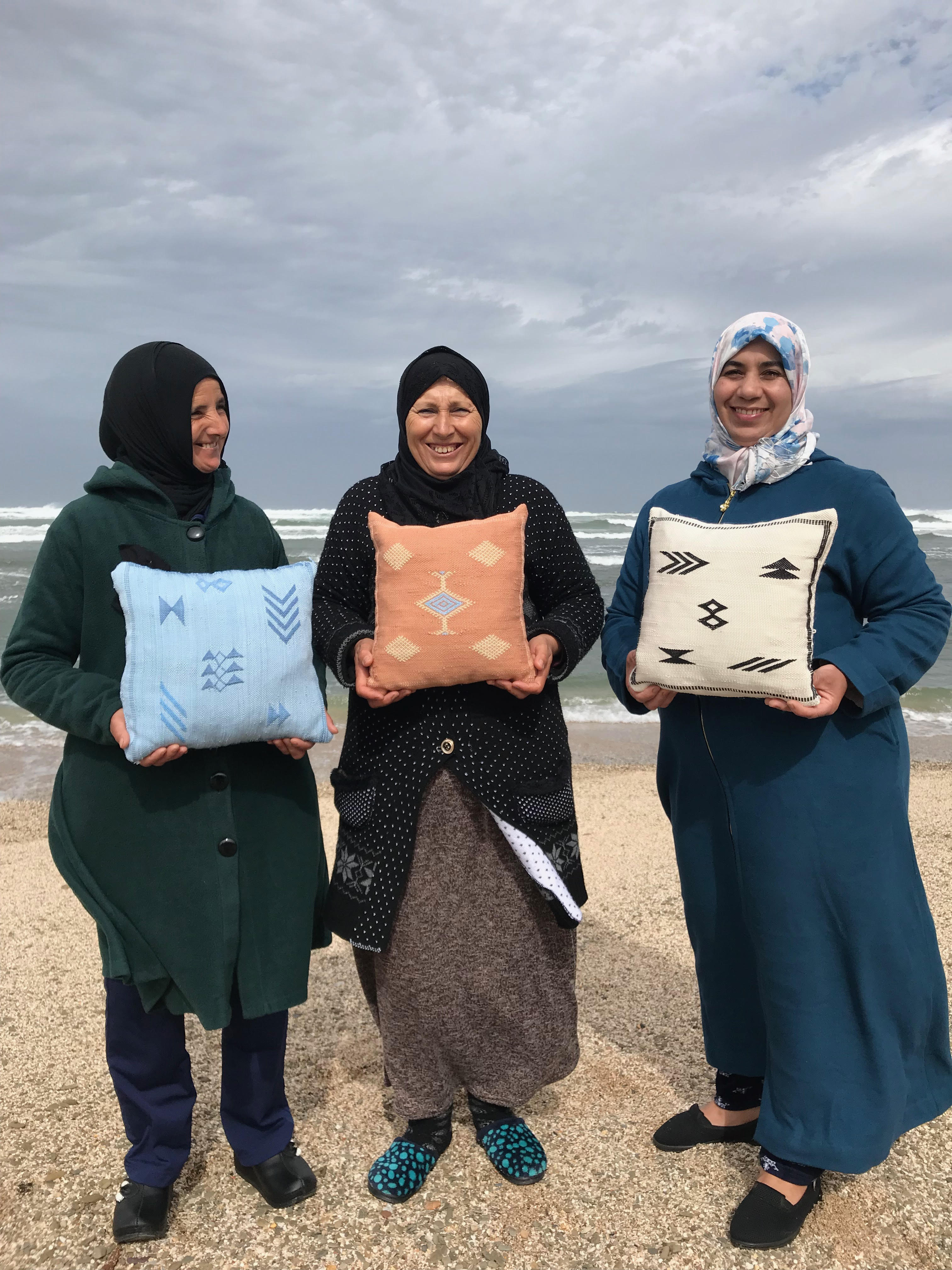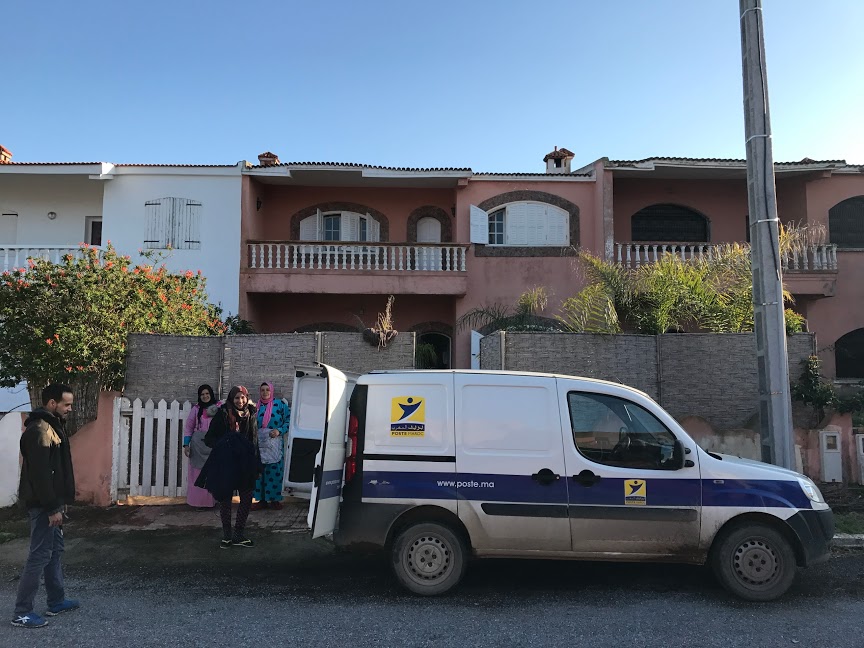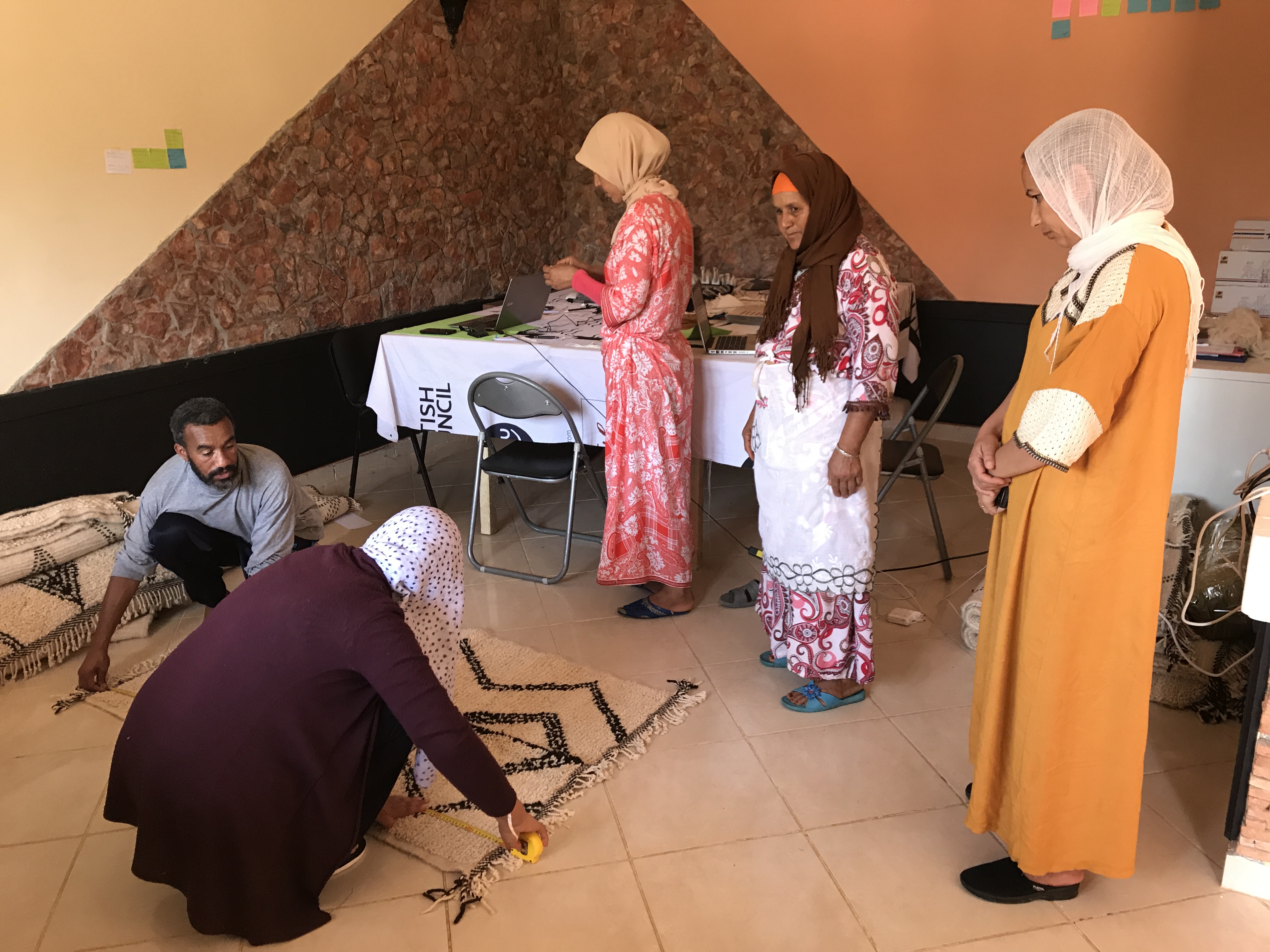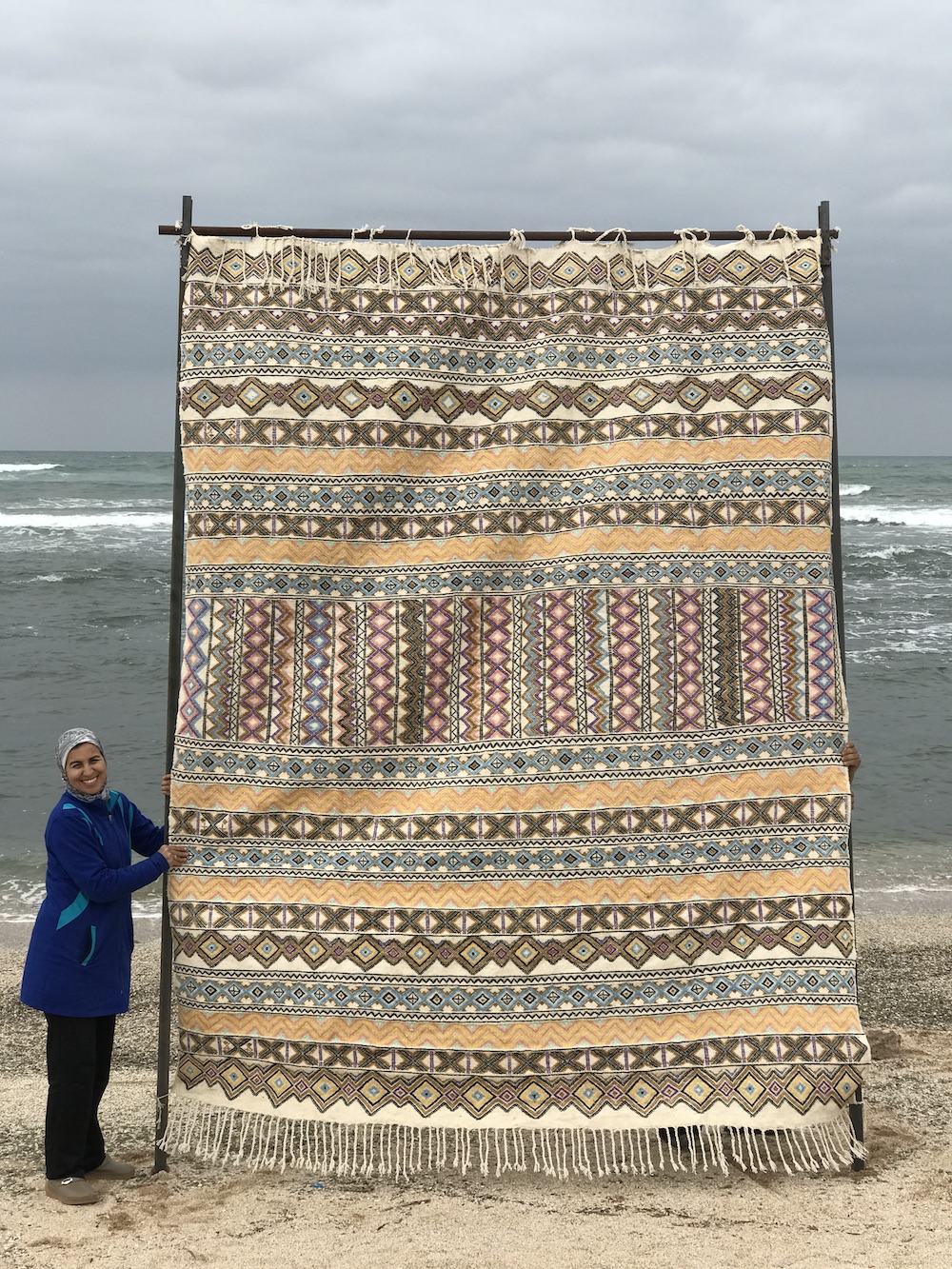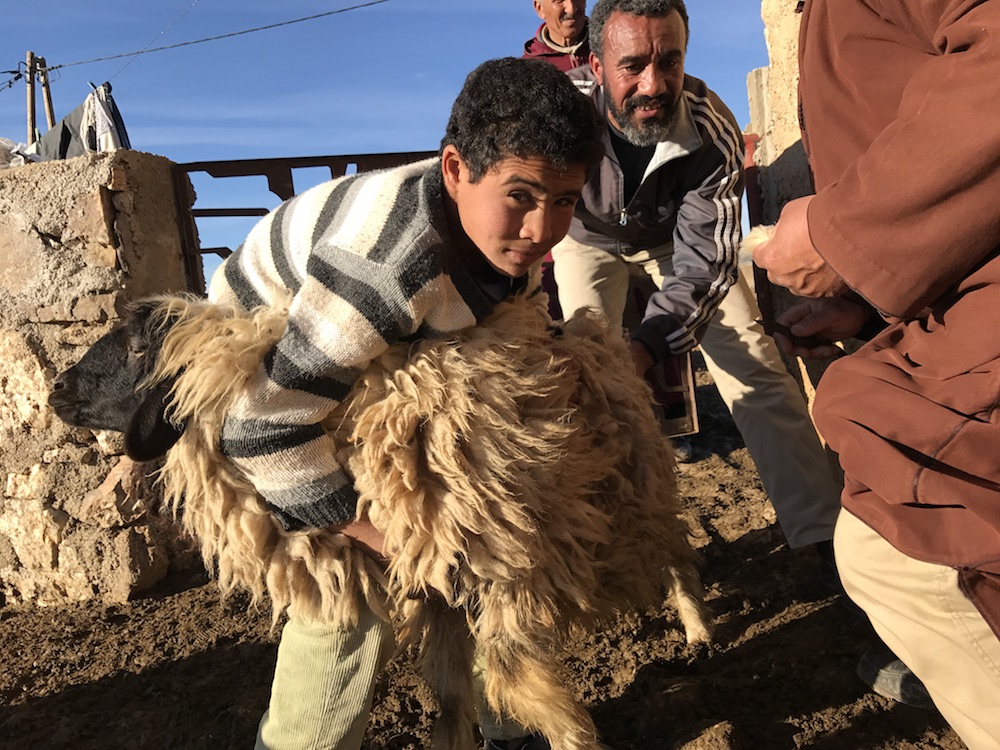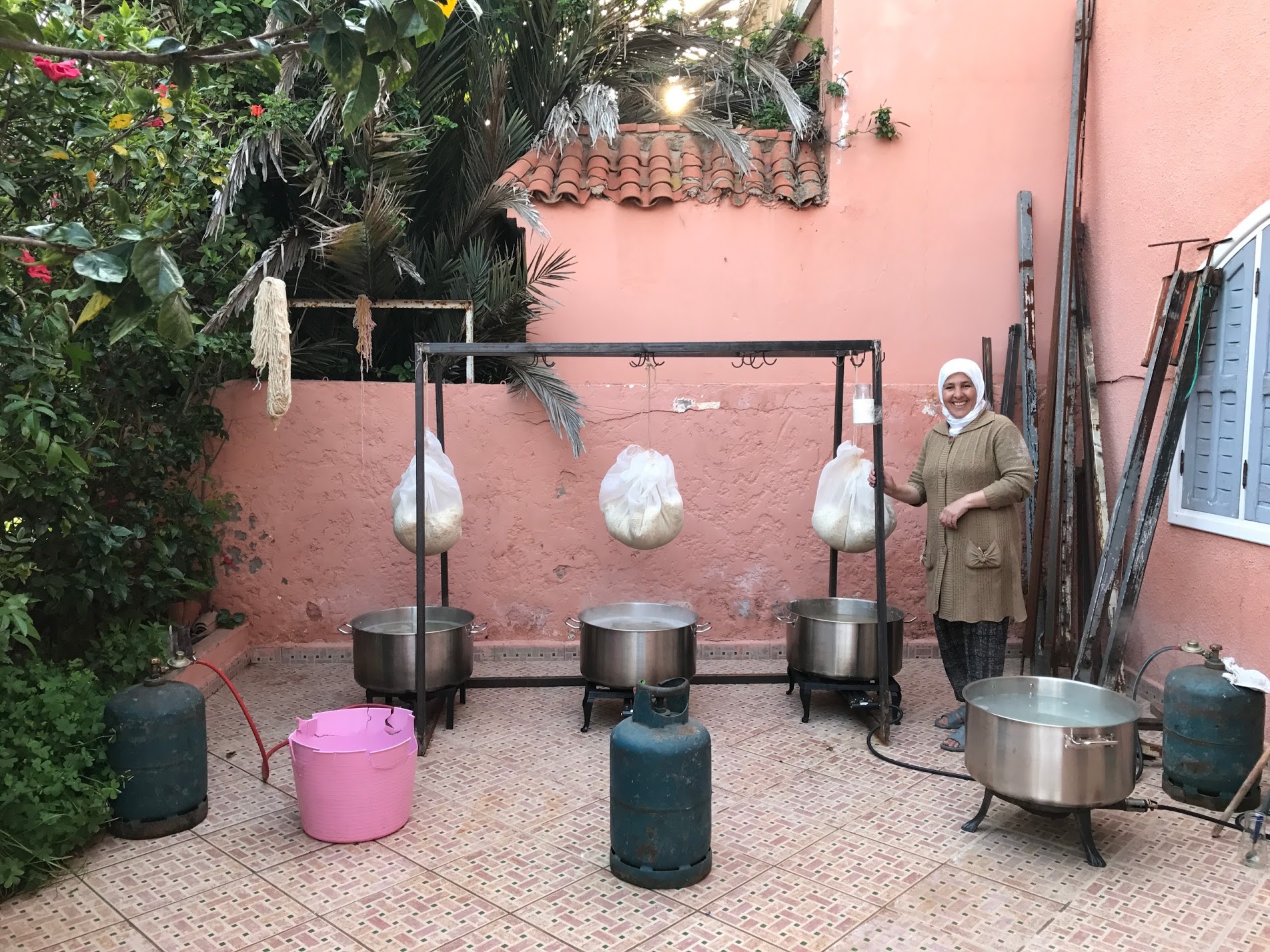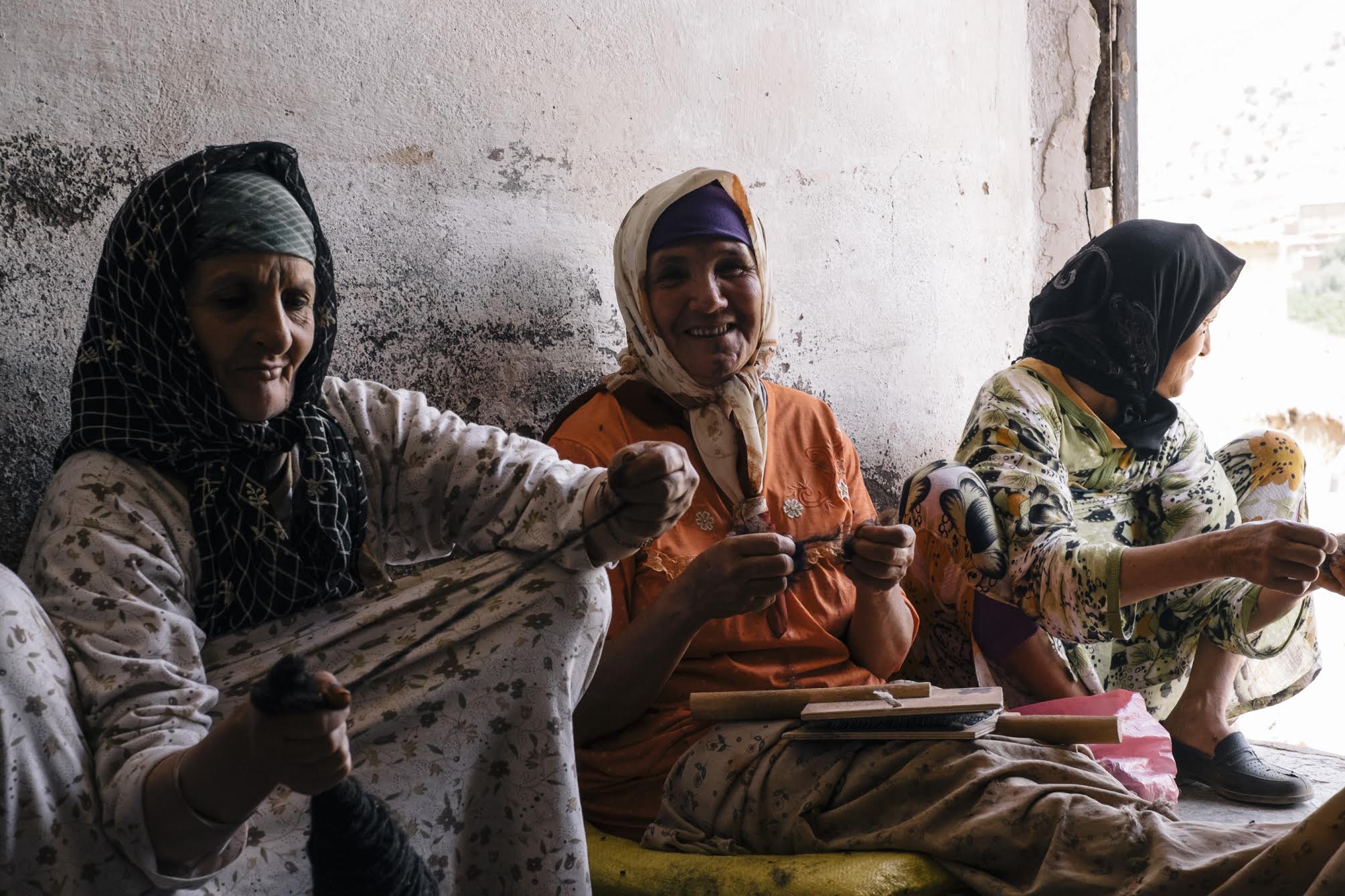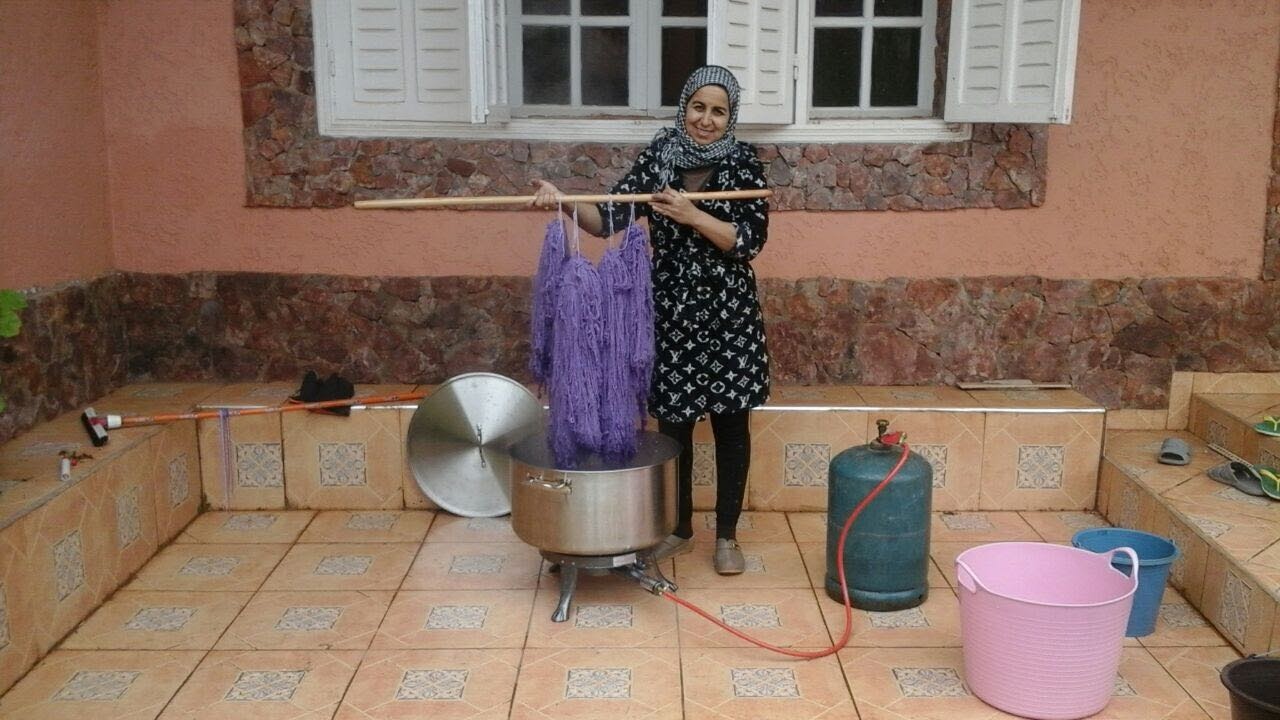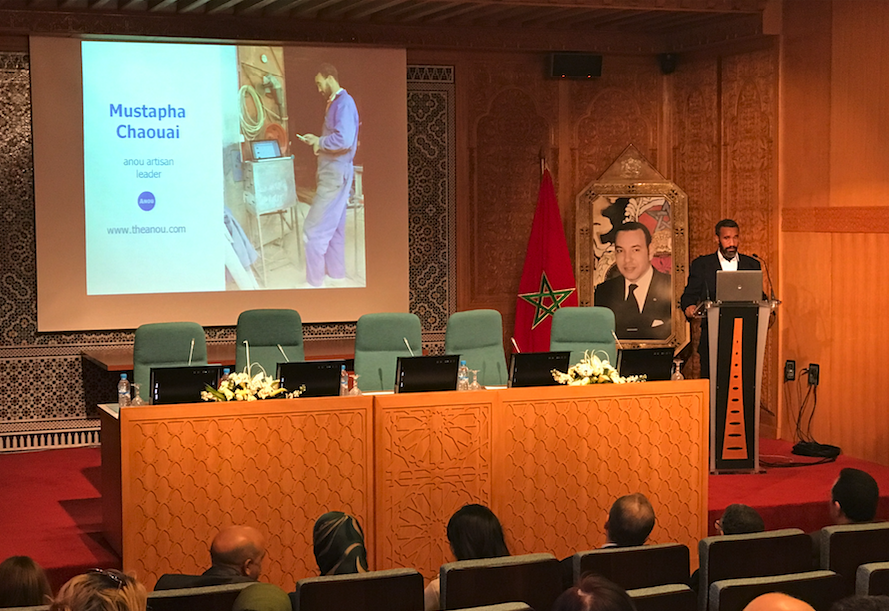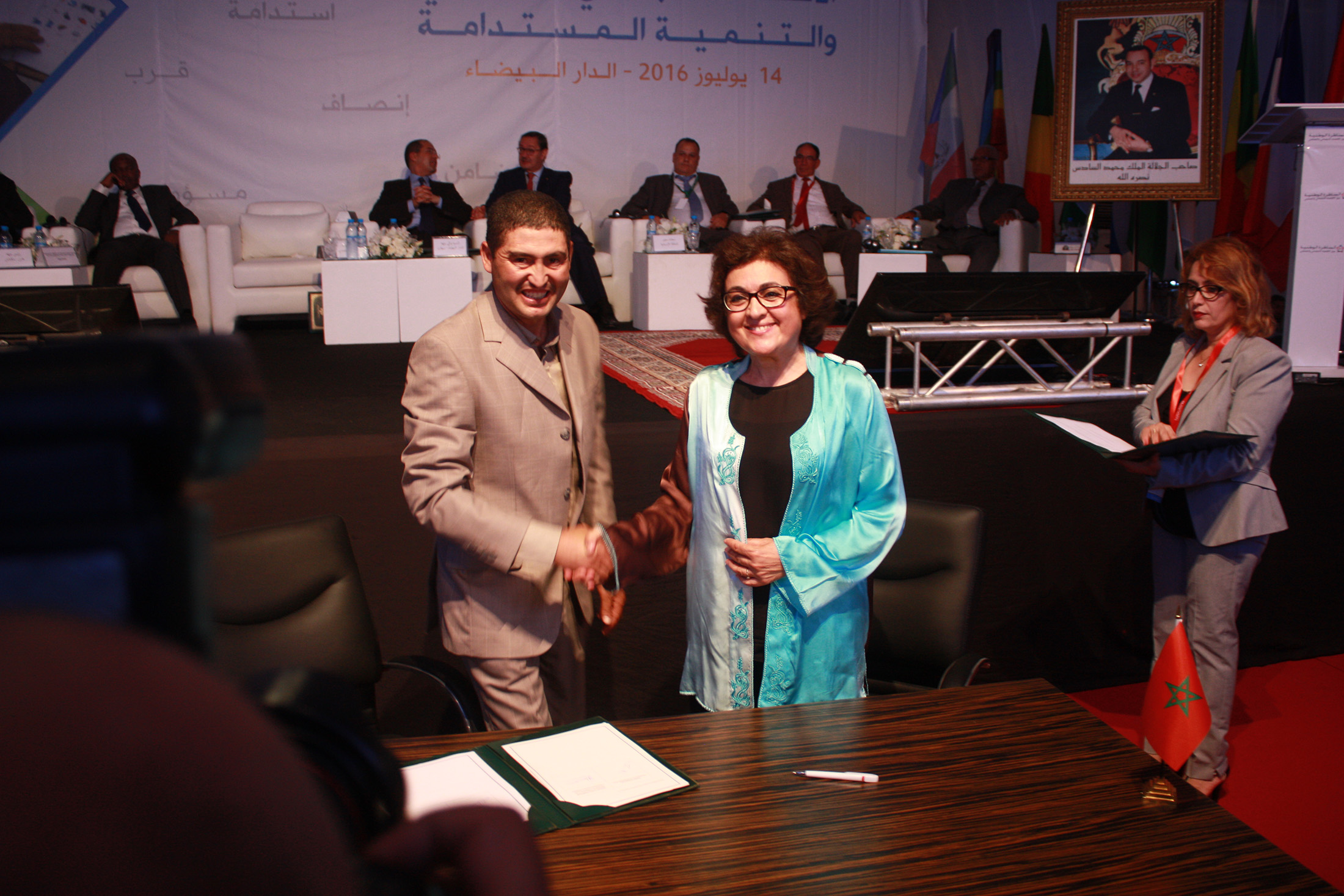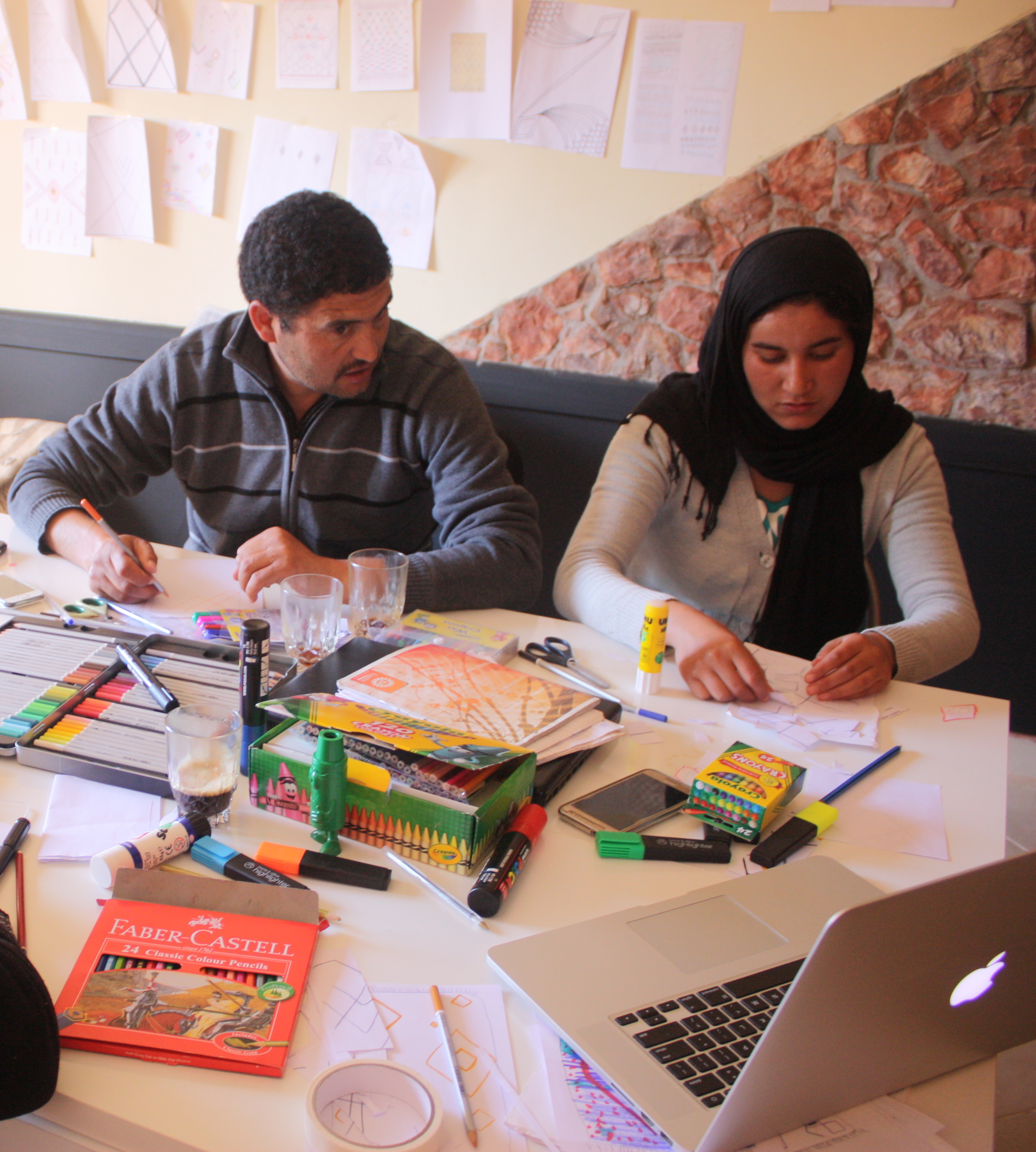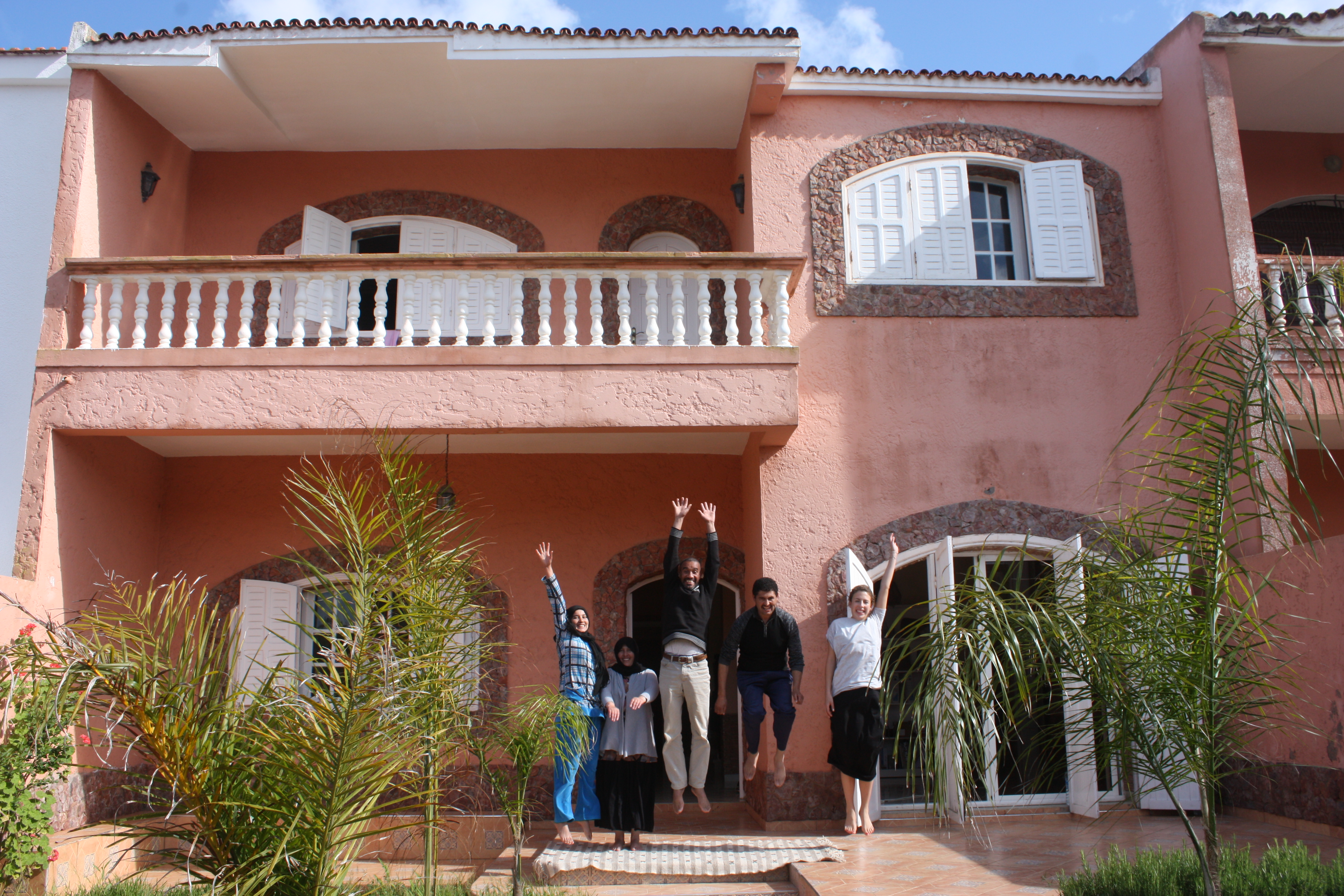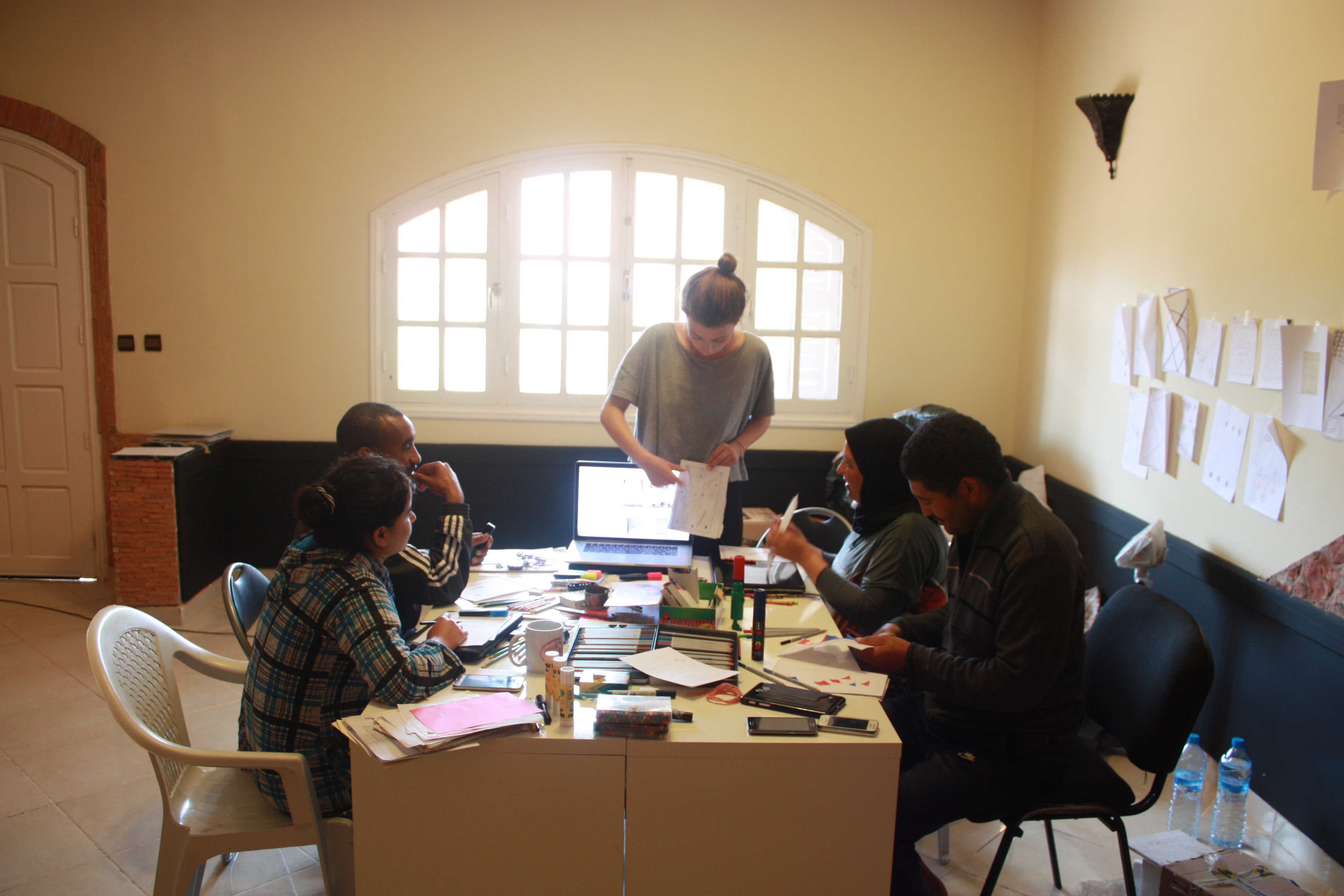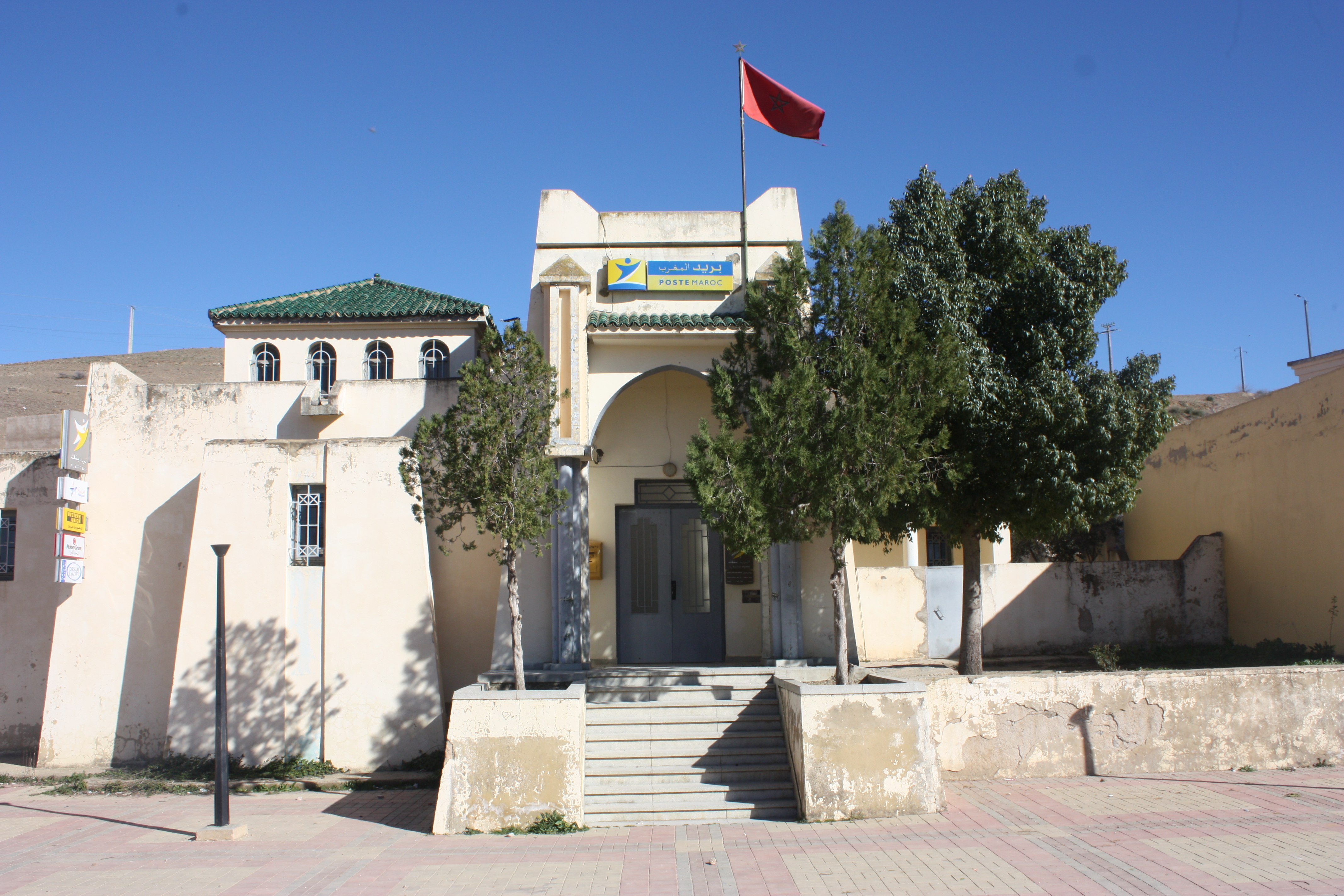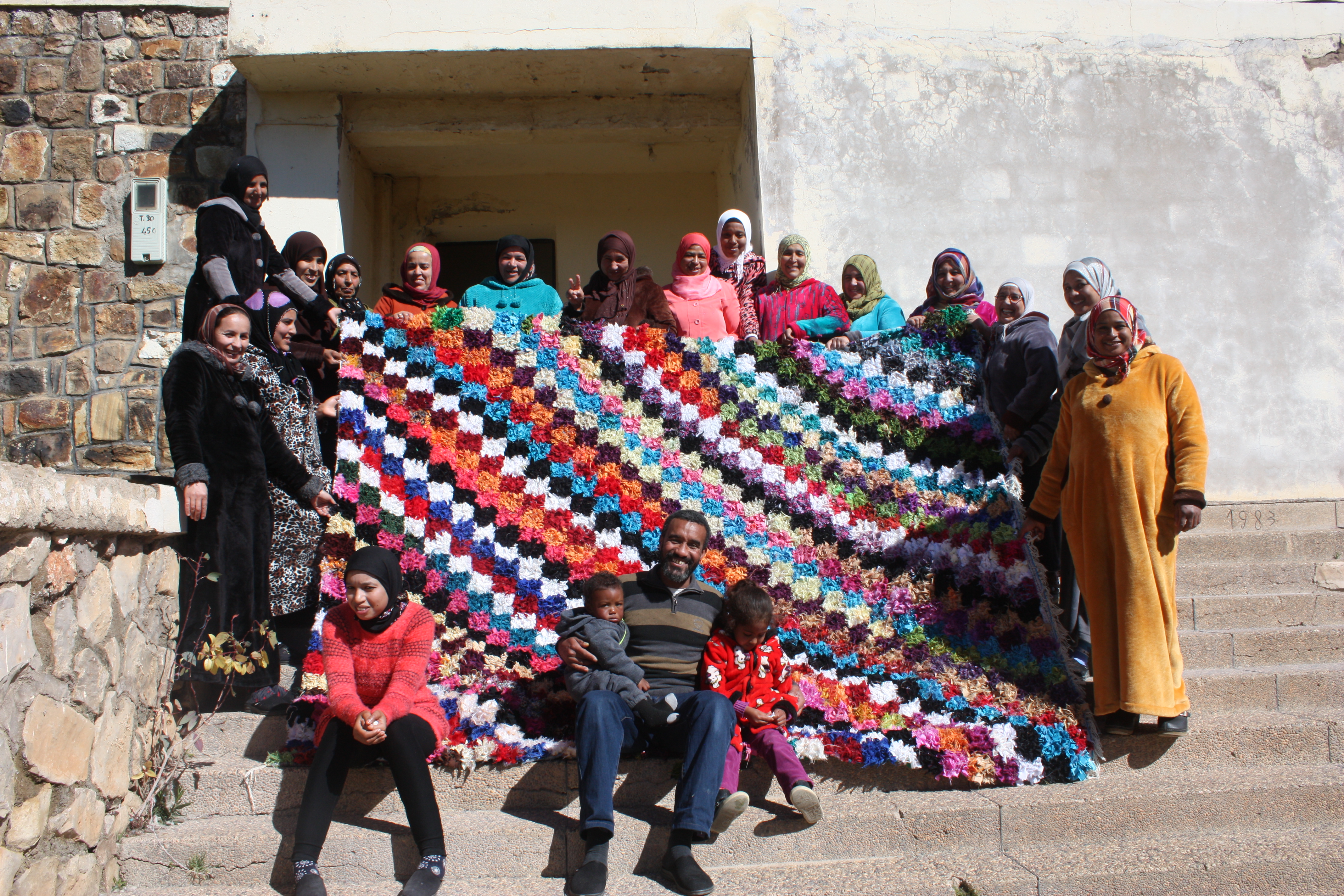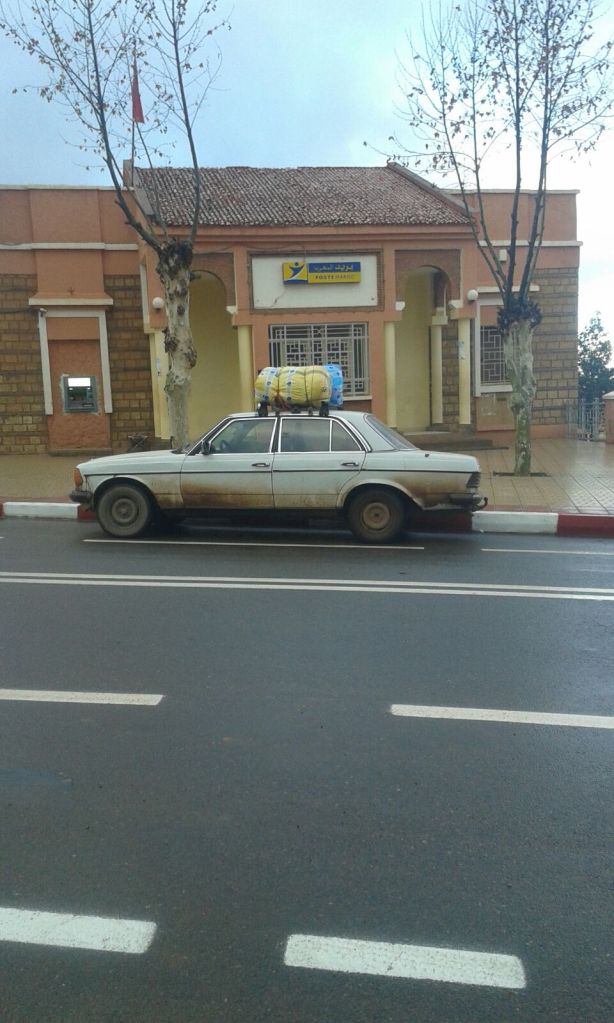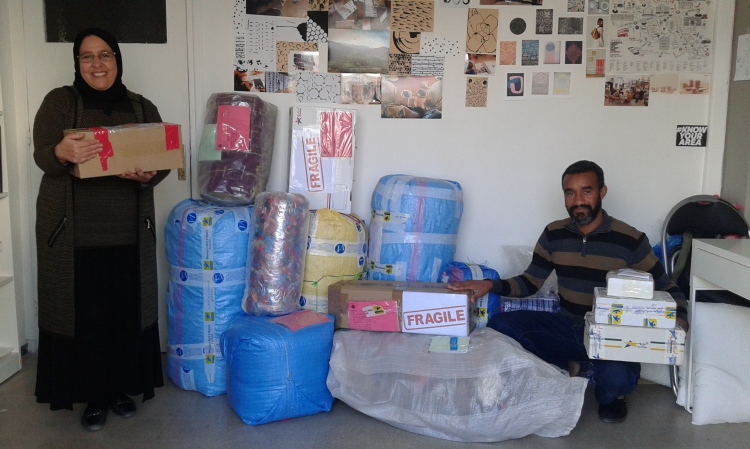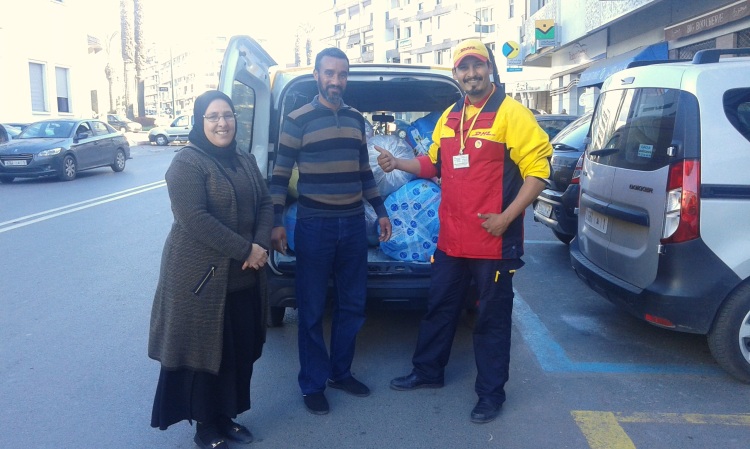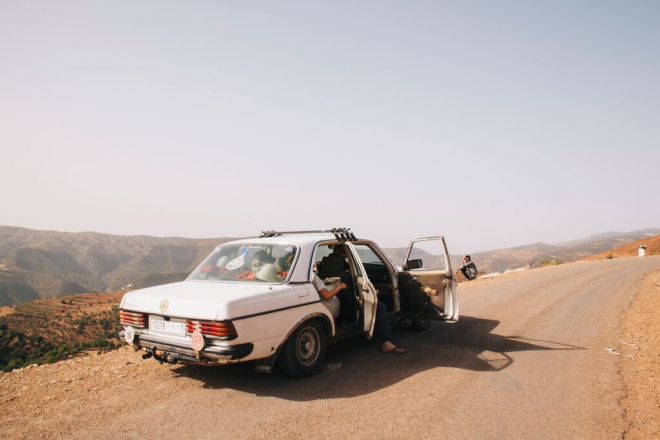Moroccan vintage rugs don’t really exist. This simple fact is all you actually need to know when determining whether that person who is selling you a Moroccan vintage rug is fundamentally honest about what they do and the impact their work has on the artisan community. This alone should be the blog post, but let’s dive deep into the weeds of the vintage world and provide clarity about what vintage actually means.
Common Sense
The term vintage is used to refer to something from the past of high quality, something that represents the best of its kind from a certain era, and to some degree, a bit rare. While debateable, 20 years seems to be the consensus around when something becomes vintage.
For Moroccan rugs that are actually older than 20 years, or pre 2000, they are often actual collector items collected by people who actually know. There is a direct correlation between the age of a rug and how likely it is to end up in an actual private collection. Older, vintage rugs are simply not going to end up on Instagram and Etsy at a price lower than what it actually takes artisans to weave a rug today.
So how is it possible that Etsy and Instagram are seemingly endless feeds of vintage rugs? Something isn’t adding up.
The Process of Rug Vintage-ification
Looking at that endless list of rugs on Instagram and Etsy, it certainly looks like those rugs are really old. But the reality is that the faded, sun swept worn look is manufactured through a process that conceals both the rug’s actual origin and the people who made it.
These vintage-ified rugs go through a multi-step process to achieve that look and feel. The first step is to have the rug made by living, existing artisans usually under the direction of your standard Moroccan ‘middleman’. The primary hubs where these rugs are made are in Khenifra, Kenitra and Taznakht. The artisans who make these rugs earn as little as 5 dirham a day and they sometimes may be a part of some loose collective of people, a cooperative in name only, or just weave at home. These artisans do not design. They are simply given print outs from Instagram and asked to remake the intricate and often time consuming designs you find online. The lack of jobs and opportunities in these areas is what drives artisans to work for less than 5% of minimum wage.
What happens after the rug is made depends on the complexity of the middleman operation. It is important to note that the complexity tends to fall along gender lines. The vast majority of middlemen of rugs, are in fact women.
Middlewomen-led supply chains of vintage rugs follow more simpler means of vintage-ification. A middlewoman will buy a rug from some other weaver, but before taking it instruct them to cover the rug in dirt, and then to walk over it in their home for a period of time and lay it out in the sun for an extended period of time. Dyes available for purchase by artisans are not of much quality (look for powdery bags of bright colors on images on Instagram) and are not light fast. So placing dirt on the rug and sun placement can get a rug to have a much older feel. Anou is well versed in this process because every cooperative we’ve banned from Anou for reselling rugs followed this process extensively. This was generally a tip that members of a cooperative we were working with were simply buying and reselling rugs on Anou.
For middlemen, the process is often much more advanced. Once a rug is woven, the rug goes through an extensive washing process designed to stress and age the rug. Through a lot of extensive research, we’ve been able to reverse engineer these processes and have largely determined that there are two primary ways. The first is through the use of simple household bleach. The catch is that you need a lot of it. To replicate the vintage process through bleach, you often need to use a 1:1 water to bleach solution for one full wash interval of the rug. It can take 100 liters sometimes to fully soak a large wool rug, and each rug that goes through this process is washed 1-3 times on average.
Keep in mind Bleach doesn’t bio decompose, so for every rug you see on Etsy and Instagram, that’s countless liters of bleach poured directly into the rivers that the artisans who made the rug depend on. The amount of times a rug is washed and goes through such a bleaching process can vary. Other chemicals, heavy in sulfur, can also be used to cut down time to create faded looks on rugs but increase the toxicity to levels we don’t quite understand. We’re still testing the effects of these other means. Ultimately, if you Google Moroccan rug washing and you’ll see people are wearing boots for a reason.
Once a rug is dry, the rug then is often literally blow torched to burn out plastics that are often found in Morocan yarns and also helps promote color fading and the general feel of the rug. These processes aren’t necessarily a secret, there are ample videos on Youtube of people showing off this process on Youtube.
Other Forms of Domestic Production
With oceans of bleach and literal blow torches, how can such distortion be believed for so long? One reason why people might believe that all those vintage rugs on Etsy and Instagram are real is because one might assume that artisans still weave and weave things for their home and family. And as these rugs age they might get rid of them. This is correct. However, this alone doesn’t justify the vast volume of vintage rugs for many reasons.
First, is that your average artisans doesn’t necessarily value traditional design and traditional materials. Visit rural areas where many rugs are produced, and their homes may be adorned with rugs, but those rugs will be made of cheap acrylics because these are cheaper and they are perceived to be modern.
Second, traditional designs are much more complicated to make and require time and money to make. Today’s genuine artisans have neither, so they don’t naturally gravitate towards the complexity of traditional work. Even well off artisans often don’t touch traditional designs. The most successful cooperatives on Anou, who earn a meaningful wage don’t gravitate towards complexity of traditional designs without the coaching of a design mentor.
The complex rugs that we perceive to be vintage and traditional are really of a bygone era because the generations that created these gallery quality rugs no longer exist. Since those generations, the market for traditional rugs and such designs has placed such a low value on them, that subsequent generations have not taken up the craft. The rather cruel irony is that in an age where Moroccan rugs are now a global phenomenon, the vintage-ifcation of rugs promoted by Instagram and Etsy have led to a commodification of Morocco’s culture and eroded any market that was once able to support the genuine product of traditional Moroccan rugs.
Today’s intricate and traditional rug designs are made in the middleman supply chain made by people desperate for money. In other words, there are not enough people simply weaving memories in their home to support the stories sold on Instagram.
Family Heirlooms
The only place where genuine vintage rugs still exist are in people’s homes. These rugs are most often woven by family members who, with each passing year are more likely to have passed on. Let’s be real, no one holds on to anything for 20 year and gives it away without the breaking of some emotional attachment. So to think of the despair and grief a person or family must be going through to make a decision to sell or give away something made by previous generations is simply indescribable.
In a poor remote town called Talsint, an area that once used to be one of the most prized rug producing areas of Morocco, the process of separating people from their cherished family heirlooms occurs in almost regular fashion. But it’s worse than you think. Every so often rug sellers descend into Talsint and knock on the doors looking for people in need and willing to sell their family’s rugs. And instead of money, families are so desperate they are willing to trade the rugs for cheap synthetic blankets and other basic essentials. The rugs they collect, all get loaded into a car, and are driven to a warehouse in Meknes and sold on some random Etsy account. When we see genuine vintage rugs the only story we can see is one of grief and despair.
Entrenched Problems
Finding a solution for this is incredibly complicated. Take your average Instagram seller of rugs. You might overlook an interesting pattern. These sellers claim that they are ending artisan exploitation, or that they enable you to buy direct from artisans, or even ignorantly claiming to be Everlane of Morocco. But look at their shops and the majority of what they will sell are actually vintage pieces. Some shops explicitly label them as vintage, or even more depressing, as family heirlooms. Look even closer, and you might notice that all the imagery of the rugs they sell are mixed with images of artisans, but a minority of those pictures actually show the artisan making what is being sold because most of the top selling product are vintage-ified rugs that weren’t made by the artisans they showcase.
The sad reality is that many artisan cooperatives require immense amounts of time and training to meet specific levels of quality. As we discussed above, the generations of deep artisan skill has passed and it needs to be rebuilt. Instagram brands that are good at marketing can’t afford to do the real work of artisan development. So they supplement their business with selling vintage-ified rugs made by people they don’t even know, and then use the proceeds from what is exploitive labor to give back to a small community of their choosing. This creates the veneer of change, but instead simply accelerates the decline of the artisan community.
Worse, the brands themselves don’t even know the damage they are creating. Anou does extensive work in verifying artisans and it is one of the hardest things we do. While we’ve now been doing this for nearly a decade, we still don’t always get it right. It is difficult, unglamorous work.
The Solution
Mohammed (not his real name) is an artisan within the Anou community and owns a beautiful workshop deep in the High Atlas. While Mohammed doesn’t make jewelry, he sells some replicas of traditional regional jewelry for tourists that pass by. The area where the workshop is located used to be home to one of Morocco’s largest jewish communities in the High Atlas Mountains and were renowned for their jewelry prowess.
Every now and again, women from the area will come carrying pure silver jewelry crafted by the jewish communities that have since left. In desperate need of money they ask if Mohammed can hang the jewelry up on the wall and try to sell it to a tourist. Mohammed accepts the jewelry, says he’ll do what he can. After the woman leaves he puts the jewelry in a hidden box out of the eye of any tourist. Mohammed has no intention of ever selling them. He believes that the heritage of his homeland is not for sale and he waits to give the piece back to the woman when she is in a position to hold on to it.
A hidden box isn’t a solution for obvious reasons but the reality is that there are no simple solutions. If we want to ensure that a woman in desperate need doesn’t have to sell precious family heirlooms then we need to address the systemic reason why the woman is in such a desperate situation to begin with. The woman doesn’t need a fanciful story, she needs something structural to change.
In many ways the women who come to Mohammed’s workshop are a loose parable for the artisan community. Many artisans who are desperate for work are willing to work in obscurity for 5 dirham a day and sell off their most valuable asset — their culture and skill. Sellers on Instagram take the reality of artisans, hide it in a box where no one can see it. But instead of safe keeping, sellers just ignore the deeper rot and profit from an environment where artisans are willing to nearly work for free.
Ultimately, the women in Mohammed’s area don’t have the clout or ability to create structural reform. The artisan community, however, if organized does. Etsy and Instagram sellers have proven they won’t do what is necessary to reform the artisan sector. 10% charity donations in return for selling vintage rugs is only accelerating artisan decline. As it unfortunately goes with all marginalized communities, real change will only come from the artisans themselves. This is why we believe the work behind Anou is so key.
The artisan community’s long-term success in changing the sector though can be accelerated by you, the customer. When you buy rugs or craft, think critically about what is being sold and the stories surrounding it. Where possible, try and make sure you’re buying from genuine, artisan owned businesses, not people claiming to be helping artisans. Anou can be of help here. Alternatively, you can buy from some businesses that truly do support artisans. The difference here is that you have to do the work in understanding if the business brings deep added value to artisan communities. Running a Shopify/Etsy store, posting pictures on Instagram isn’t enough. As Anou has shown, artisans can do this too now. There isn’t enough margin in such standard businesses to genuinely support the development of the artisan community. If this is all too much to think through, just avoid people or business selling vintage Moroccan rugs or heirlooms.
Lastly, change is dependent on sellers. It’s difficult to be self critical when you think you are doing good. But do the work of evaluating just how your business works and whether it is of benefit, and make the difficult changes that need to be made. And if you cannot make those changes, partner with those who are doing the work that is actually needed.
The Future of Vintage
A fair question to ask is whether creating rugs that look vintage is bad? Not necessarily. Styles will change, and artisans shouldn’t be locked into a specific way of finishing a rug. The problem is that as of today artisan and environmental ruin is hidden behind the term vintage. If buyers and sellers can bring research and transparency to the sector, it will open to the door for artisans to bring such styles to market in a way that benefits everyone. The Anou Cooperative has been hard at work trying to make sustainable washes available for the wider community and their customers.
The first step to all of this, is to acknowledge the simple truth that vintage rugs as you think you know it do not exist. The second step is then to ensure that when buying rugs be sure to buy from artisans and ensure artisans are earning the full value for their work. It is only until artisans earn the full value for their work will they be willing to invest the creative development of their work.
This blog post is long, but the solution at the end of the day is short. If we can just follow these simple steps, perhaps we can create a future where there is more excitement about the future of artisans who are living today rather than faceless knock-offs of a past that never existed. We fundamentally believe that this future is possible, and we hope you do too.




























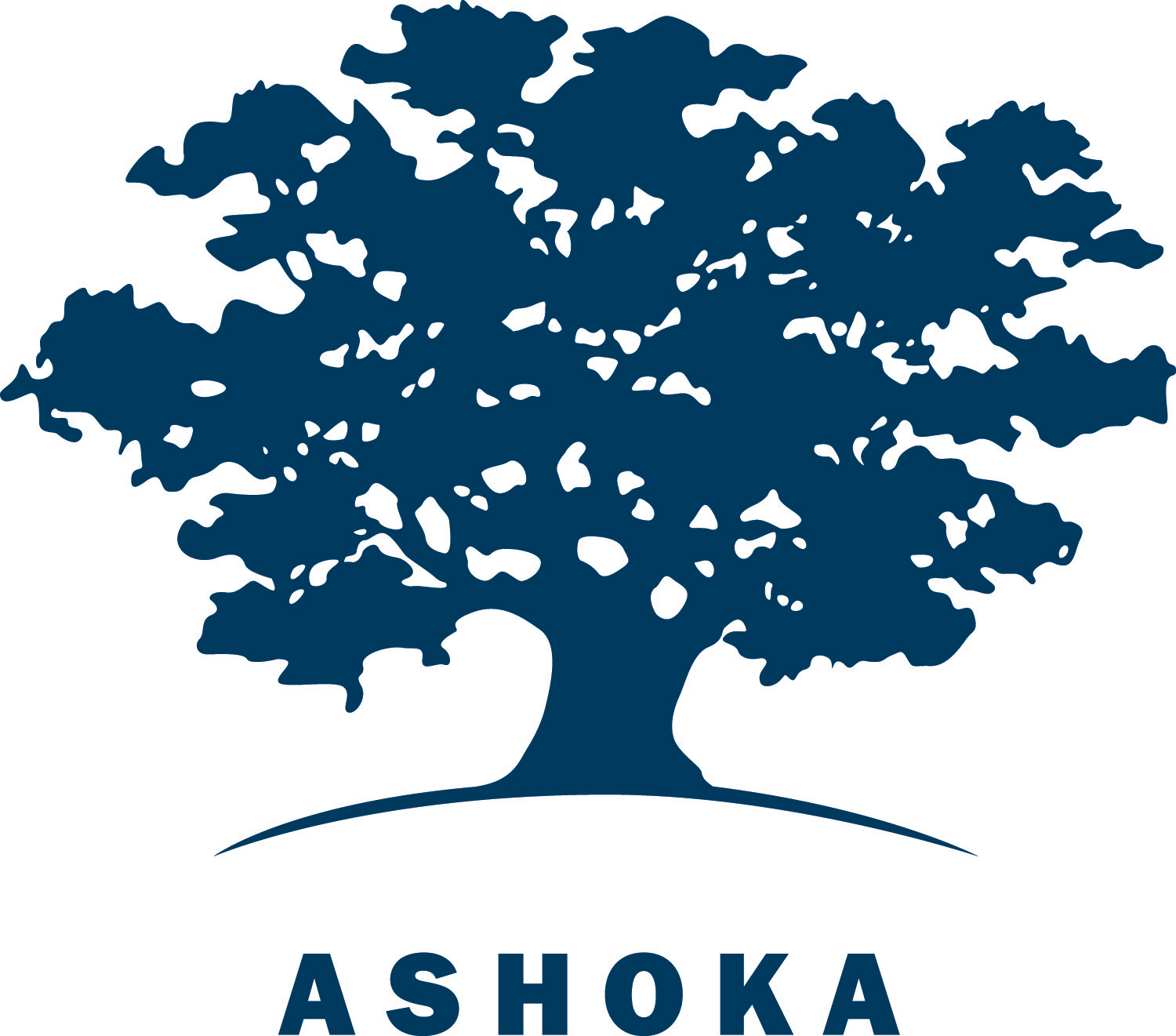 After a year and a half vetting process, we are excited to announce The Anou Cooperative founder Dan Driscoll has been named as an Ashoka Fellow.
After a year and a half vetting process, we are excited to announce The Anou Cooperative founder Dan Driscoll has been named as an Ashoka Fellow. 